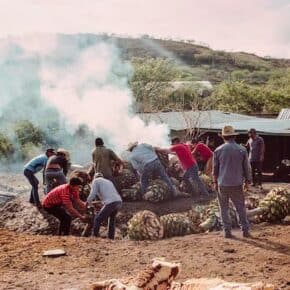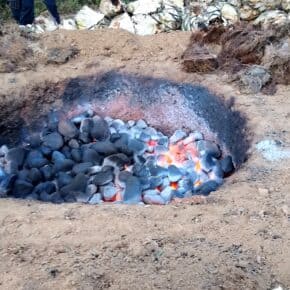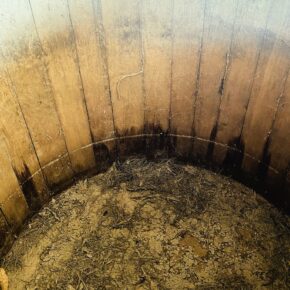
You may have noticed the term ensemble on some mezcals, it’s just like the dictionary definition, the second one after “a group of musicians, actors, or dancers who perform together.” The one that reads “a group of items viewed as a whole rather than individually.” As applied to the mezcal world the same holds true, a variety of agaves are harvested, roasted, mashed, fermented, distilled, and bottled together.
In wine terminology this is a field blend and probably what mezcal used to be, a distillation of what was ripe in the fields at the moment of harvest. Ensembles are really tricky operations because you’re dealing with all sorts of variables, agaves of different sizes roast at different rates, some will ferment differently because they’re more or less woody, etc. Which is to say, ensembles are hard to make but can be enormously rewarding exactly because of the complexity inherent in the operation. A maestro mezcalero who can balance all these variables can make something truly extraordinary and unique. Because, once you put that mezcal in a bottle, you’re never going to be able to to replicate it again. And that’s the point, create a spirit that reflects the moment. What’s ripe now will change next week or month so embrace that spirit. And that’s why maestro mezcaleros love ensembles. It lets them express their craft to the maximum and it also pulls the most distinct flavors from the field.
The other type of mezcal made from different agaves is a mezcla, literally a “mixture.” Mezclas are mixtures of different batches of already distilled agaves. You can take a batch of, say, an espadín and mix in some madrecuixe until you find a proportion that fits your ambition. While this is technically simpler than an ensemble, it still requires plenty of art.
There are a few variations on these processes, what happens when you roast different agaves separately and ferment them together? I haven’t seen a clear terminology for these more finely grained mixtures. When you visit the palenque the maestro mezcalero will talk your ear off about all the nuances of the current patch but, to date, much of that detail hasn’t made it onto the bottle label or out in the mezcal loving public.
And that’s about to become an issue because the word “ensemble” doesn’t even appear in the latest law regulating mezcal, NOM 70. The word “mezcla” does appear, exactly once when NOM 70 says that you can have a mezcla of mezcals only when they’re of the same category (Mezcal, Mezcal Artesanal, Mezcal Ancestral) and class (blanco, reposado, pechuga, etc). Perhaps we’ll hear more about them if an audience develops. For now these mixtures are the exceptions worth seeking out exactly because they are frequently passion projects or something that a mezcalero is making out of fealty to a tradition worth appreciating and passing along.
Just to mention a few widely available in the United States:
- Koch Ensemble
- Bruxo #4 Ensemble
- Mezcalero: Some of their releases are ensembles.
- Wahaka Ensemble
- Vago Olla de Barro Ensemble
—
Read more of our entries in the Mezcalistas Encyclopedia of Mezcal and email us questions or ideas for future entries.












great article. thanks for shedding some light.